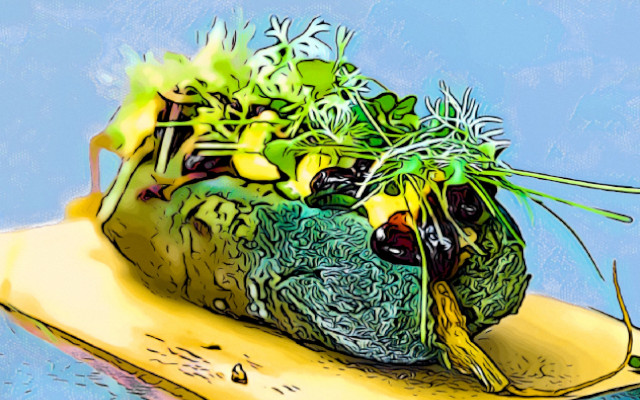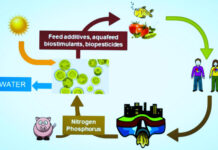Microalgae and insects are prime sources of low-impact protein for use in food and feed.
Research is also moving forward in Europe under the Horizon 2020 program. As is logical and proper in an effort to move closer to the Sustainable Development Goals (SDGs) in UN Agenda 2030.
Protein and food security
Protein is essential to life, in omnivorous diets as well as in vegetarian and vegan diets. Their deficiency is associated with serious hindrances to the development and maintenance of various organs and systems, with even irreversible impairments to essential functions.
Malnutrition is the leading cause of disease globally, as reiterated in the Global Syndemic reportof The Lancet‘s EAT Commission. Already in 2019 it afflicted more than 1 in 7 individuals, according to FAO(Food and Agriculture Organization), WFP(World Food Programme) and WHO(World Health Organization) reports. And it is bound to be exacerbated by the Covid-19 pandemic.
The UN report
The World in 2050
highlights how the current availability of protein must be doubled, in the next three decades, to support the increase in the global population, which is estimated to reach 10 billion people. Duplicating the production of current sources of protein, animal and plant, however, is unsustainable.
The pressure of livestock farming on the ecosystem is already excessive, especially given Europe’s dependence on other continents for the purchase of completely unsustainable agricultural raw materials. Such as GMO soybeans from the American continent, 14 million tons of which are imported into the EU annually. (1) But outsourcing land robbery and deforestation certainly does not solve the problem, to which indeed the environmental impact of ocean transportation is added.
Food security-that is, the security of the food supply-must therefore be addressed through the development of sustainable crops, such as legumes and hemp. As well as through new high-efficiency protein sources such as microalgae, insects and single-cell organisms. The protein content of which can easily exceed 50% of dry mass. Space, therefore, for research.
Microalgae
Microalgae represent perhaps the most extraordinary resource for feeding humans and animals. They grow easily in any salinity and water temperature conditions, reproduce endlessly with extraordinary efficiency. Microalgae stand to food like the sun stands to energy, but their potential is still almost completely untapped.
Horizon 2020 is funding two research projects aimed at expanding the applications of microalgae in human and animal nutrition, optimizing their production processes, and incorporating them into various food categories:
– ProFuture aims to develop sustainable supply chains to produce food and feed based on four microalgae species already used in food(Arthrospira [Spirulina] platensis, Chlorella vulgaris, Tetraselmis chui and Nannochloropsis oceanica).
Italian lead partner in the project is the FARE division (
Food & Agriculture Requirements
) of Wiise Srl benefit company (also headed by GIFT), which has involved Coop Italia and Enervit with a view to developing functional foods.
– Instead, NextGenProteins studies innovative and environmentally friendly production models aimed at reducing resource consumption and thus production costs. This is the case, for example, with the cultivation of microalgae downstream of a geothermal power plant in Iceland, bringing value to its carbon dioxide emissions and water output.
NextGenProteins also aims to reduce barriers (regulatory, economic, market) that limit the development of sustainable proteins. In addition to microalgae, the project includes single-cell proteins and insects. Coordinator is the Icelandic MATIS OHF. The University of Bologna Alma Mater Studiorum, GESCO Agricultural Cooperative (Amadori), and seafood wholesaler VRM srl of Verona are participating.
Insects at the table
In turn, insects are an excellent source of protein and minerals such as iron, potassium, phosphorus, and calcium. They can be raised using 50% to 90% less land than conventional livestock, with about 100 times less greenhouse gas emissions. Another advantage, they can be fed with some by-products of the food chain, promoting waste reduction.
In Asian, African and Latin American countries, insects are part of the diet of about 2 billion people. In Europe, consumption has been initiated for at least a decade but only in some countries, in the form of ingredients (e.g., cricket flour in baked goods).
The overview of the decisions of national authorities in some EU countries that we published two years ago is essentially unchanged. As is the regulatory framework, also described by this site, in Italy and Europe, where the feed use of insects is allowed only in aquaculture.
Amid regulatory hurdles and lack of vibrancy among operators, however, the market is struggling to take off. Two European projects are working to promote change:
– the aforementioned NextGenProtein also aspires to overcome the cultural barriers of most European consumers. A possible development, given that as early as early 2019, 1 in 5 of the nearly 2,000 consumers we surveyed said they were willing to try insect meal products,
– SUSINCHAIN(SUStainable INsect CHAIN) aspires to impart acceleration to food and feed insect production through research and development aimed at reducing production costs and increasing profitability. With the stated goal of achieving the replacement of animal protein by insect protein to the extent of 10 percent in animal feed and 20 percent in human food by 2025. Objectively unrealistic, given the timing of the relevant Novel Food licensing procedures.
The SUSINCHAIN project is coordinated by Stichting Wageningen Research, a partnership between Wageningen University and Wageningen Research Foundation. Two highly respected food research entities based in the Netherlands, where insect consumption has been authorized for many years. Also participating in Susinchain are the University of Turin and Marche Polytechnic University.
SMART Protein
Other sustainable and resilient protein sources that are candidates to feed the population come from some common plants (fava beans, lentils, chickpeas, quinoa), and from microbial activity on fungi, yeasts, and by-products or residues from the food processing industry (bread scraps, pasta, beer).
The Smart Protein project aims to make these proteins palatable to consumers by making them palatable food ingredients. Leading the project is the School of Food and Nutritional Sciences at University College Cork, Ireland. Also participating are two Italian universities, Udine University and the Free University of Bolzano, whose Micro4Food laboratory has SHIME(Simulator of Human Intestinal Microbial Ecosystem), an ‘artificial gut’ through which researchers will assess the impact of Smart proteins on the microbiome and metabolome of the gastro-intestinal tract.
Marta Strinati and Dario Dongo
Notes
(1) European Commission, United States is Europe’s main soya beans supplier with imports up by 112%, press release, 7.1.19 https://ec.europa.eu/commission/presscorner/detail/en/IP_19_161









